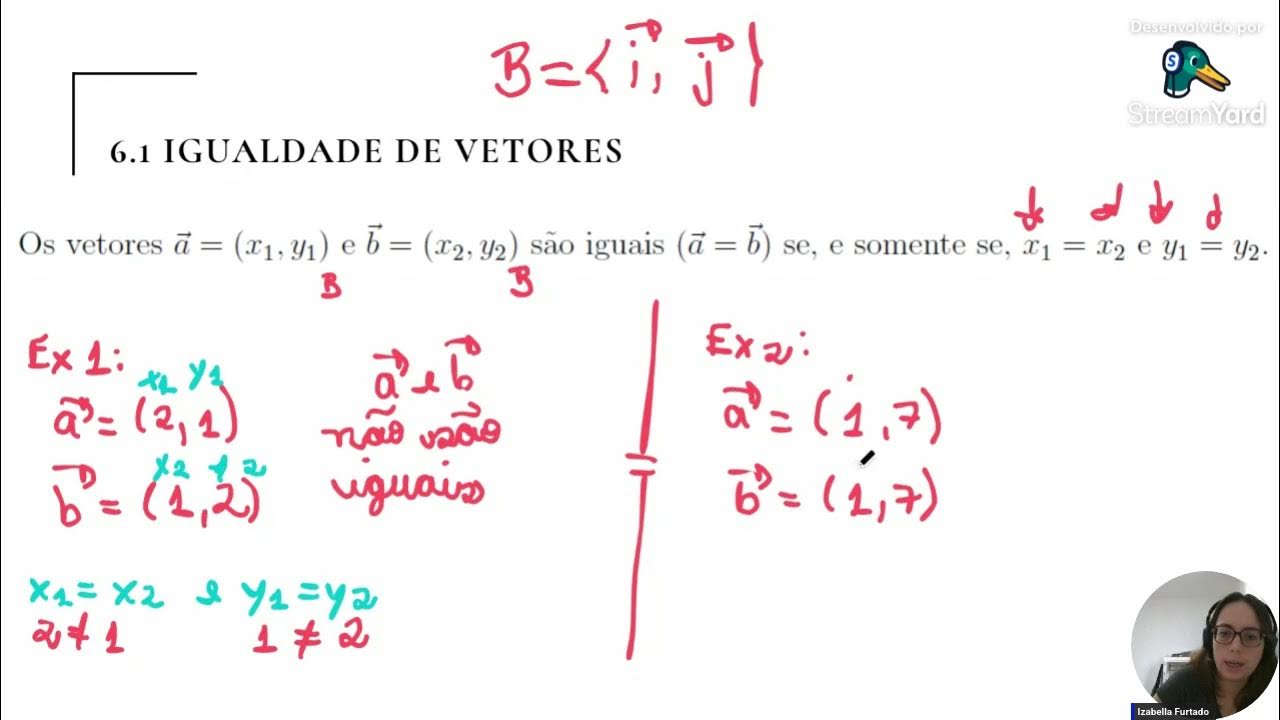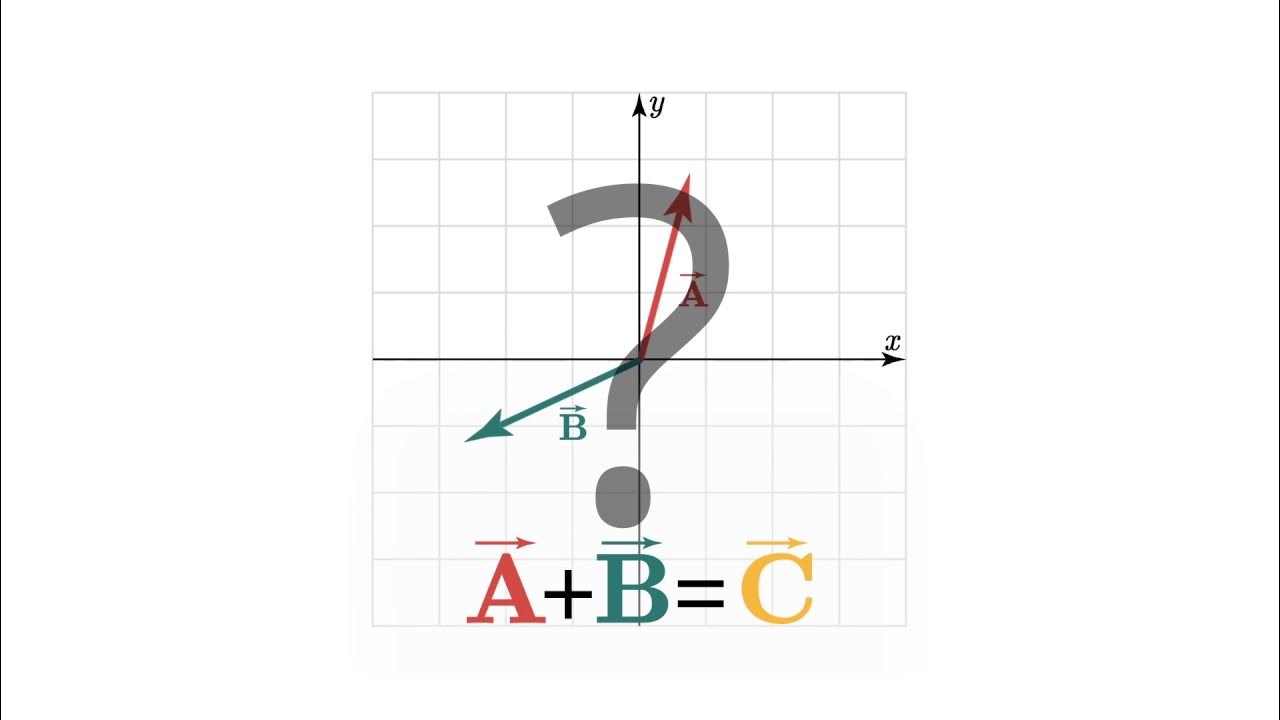ALE Ruang Vektor 04a
Summary
TLDRIn this video, the concept of vector spaces is explored, focusing on the fundamental operations of vector addition and scalar multiplication. The properties these operations must satisfy are outlined, including commutative, associative, and distributive properties, as well as the existence of zero and inverse elements in vector addition. The video further explains how scalar multiplication interacts with both vectors and scalars, highlighting the importance of distributivity, associativity, and the unit scalar. These properties form the backbone of vector space theory, a crucial concept in linear algebra.
Takeaways
- 😀 Vector space consists of a set of vectors with two main operations: vector addition and scalar multiplication.
- 😀 The definition of vector space includes 10 properties, though some texts may refer to only 8 due to overlap in definitions.
- 😀 Vector addition is a binary operation where two vectors are combined to form another vector, satisfying specific properties.
- 😀 Scalar multiplication involves multiplying a vector by a scalar (a constant), producing a new vector.
- 😀 The operations must fulfill properties like closure, commutative, associative, and existence of identity and inverse elements.
- 😀 For vector addition, the properties include commutativity, associativity, existence of a zero element, and existence of an additive inverse.
- 😀 For scalar multiplication, properties include distributivity over vector addition, distributivity over scalar addition, and associativity of multiplication.
- 😀 The scalar multiplication operation also has an identity property, where multiplying by 1 leaves the vector unchanged.
- 😀 The zero vector plays an important role in vector addition, as adding it to any vector results in the same vector.
- 😀 Distributivity means that the scalar multiplication operation preserves addition, both for vectors and scalars.
- 😀 Associativity of scalar multiplication ensures that the order of scalar multiplication does not affect the result when multiple scalars are involved.
Q & A
What is the definition of a vector space?
-A vector space is a collection of vectors that satisfy two operations: vector addition and scalar multiplication. The operations must fulfill specific properties.
How many properties must the operations of vector space satisfy?
-There are 10 properties that the operations must satisfy. However, some sources mention only 8 because two properties are already included in the description of the definition.
What are the two main operations in a vector space?
-The two main operations in a vector space are vector addition and scalar multiplication.
What does 'closed' mean in the context of vector operations?
-'Closed' means that performing an operation on elements within the vector space will result in an element that is also in the vector space.
What are the conditions that the addition operation must satisfy in a vector space?
-The addition operation must be commutative, associative, have a zero element, and each element must have an inverse under addition.
What does the term 'commutative' refer to in vector addition?
-Commutative means that the order of addition does not affect the result. For example, v + u = u + v.
What is the role of the zero element in vector addition?
-The zero element in vector addition acts as the identity element, meaning that adding the zero vector to any vector v results in v itself, i.e., v + 0 = v.
What is meant by 'inverse' in vector addition?
-Inverse in vector addition refers to the property that for every vector v, there exists an element -v such that v + (-v) = 0, where 0 is the zero element.
What properties must scalar multiplication satisfy in a vector space?
-Scalar multiplication must be distributive with respect to both vector addition and scalar addition, associative with respect to scalar multiplication, and there must be a unit scalar (1) such that 1 * v = v.
Can you explain the distributive property in scalar multiplication?
-The distributive property means that scalar multiplication distributes over vector addition. For example, k * (v + u) = k * v + k * u, where k is a scalar and v, u are vectors.
Outlines

Dieser Bereich ist nur für Premium-Benutzer verfügbar. Bitte führen Sie ein Upgrade durch, um auf diesen Abschnitt zuzugreifen.
Upgrade durchführenMindmap

Dieser Bereich ist nur für Premium-Benutzer verfügbar. Bitte führen Sie ein Upgrade durch, um auf diesen Abschnitt zuzugreifen.
Upgrade durchführenKeywords

Dieser Bereich ist nur für Premium-Benutzer verfügbar. Bitte führen Sie ein Upgrade durch, um auf diesen Abschnitt zuzugreifen.
Upgrade durchführenHighlights

Dieser Bereich ist nur für Premium-Benutzer verfügbar. Bitte führen Sie ein Upgrade durch, um auf diesen Abschnitt zuzugreifen.
Upgrade durchführenTranscripts

Dieser Bereich ist nur für Premium-Benutzer verfügbar. Bitte führen Sie ein Upgrade durch, um auf diesen Abschnitt zuzugreifen.
Upgrade durchführen5.0 / 5 (0 votes)






